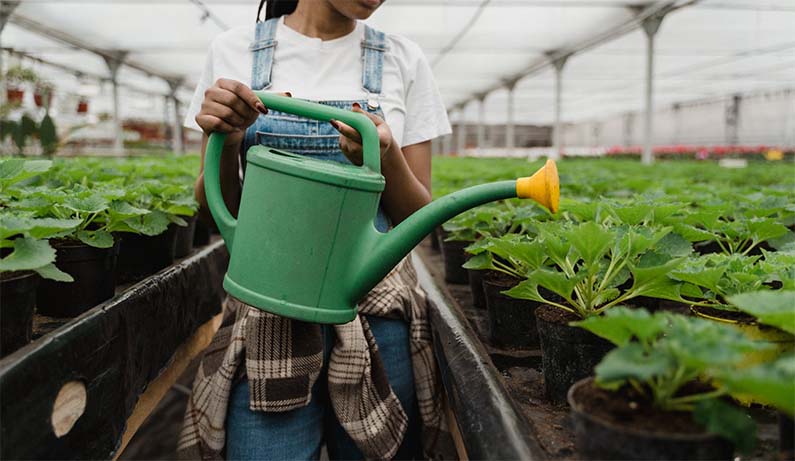
Annual Plants: Annual plants are those that complete their life cycle in one growing season.
Compost: This is the process of controlled rotting of plant material where the final product has a more natural color and texture than typical backyard garbage. When composted, organic matter can be used as an effective fertilizer for your garden or even in place on top!
Catch Cropping: Think of a polyculture as being like an onion. You plant the onions to catch your carrots, and if they start climbing over them (which is probably going to happen), just pull those weeds out!
Contour Plowing: Contouring is a widely used soil research technique that uses the natural contour lines of an area to reduce runoff. In theory, this method works better than parallel grading because it helps retain water and protects against erosion for longer periods without having as much damage done by storms or heavy rainfall.
Consequently, there’s likely going to be less risk involved with converting from one type over another so you don’t have any need worry about things getting worse before they might get better again if your current project has been struggling due largely from bad drainage problems caused mostly thanks in part through poor construction practices rather then anything else!
Damping Off: Fungal disease that can cause seedlings to die when they are exposed to high levels of moisture in the soil.
Evergreen: A collection of plants that forms a natural defence against the cold winter months.
Foliage: The leaves of a plant.
Fertilizer: A supplement to the soil that helps plants grow. Fertilizers contain one or more of three main nutrients (nitrogen, phosphorus and potassium) as well as secondary compounds such calcium magnesium sulphur trace elements. A great fertilizer can have all these things in it.
Fertigation: Fertilizer can be applied to plants in a variety of ways, including the direct application through watering or via an injection system for water supply lines.
Germinate: The process of sprouting.
Germination: Fertilizer can be applied to plants in a variety of ways, including the direct application through watering or via an injection system for water supply lines.
Heat Bead: Heat beads are a great way to keep your plants moisturized during dry periods. They’re small milk carton sized containers that contain the solid wax, called paraffin encased in soft plastic with heating capabilities! When these things get warm they can be dipped into cold water and melt onto themselves creating liquid form which keeps everything hydrated even more so than before as this is absorbed better by plant roots due making them feel much warmer on top-quality materials like those found inside heat beads rather then inexpensive ones from where quality goes down faster because people wash their clothes there not realizing how hard labor has been trying produce something out.
Hoes: A garden tool used to weed, loosen and aerate soil. Unlike shovels which dig or trench hoes are most often seen as an alternative because they can be particularly useful for tilling under cover crops when preparing beds that need deep preparation with minimal damage done by machinery in order plant seeds more successfully than if you were just using a spade alone .
Hydrozoning: Hydroponic systems are all the rage these days, and for good reason. A hydroponic system which uses a series of planting containers that can be located anywhere in one water reservoir; this type of set up allows each individual plant to grow at its own particular depth so their roots will always reach optimal nutrient rich ground when necessary!
Natural Growing: A type of farming that prioritizes nature’s natural cycles, such as sunlight and rainfall. This can be done in raised beds or outdoor plots with the help from greenhouses for year-round growing environments .
Potting Mix: Imagine a world where you never have to worry about dead plants going bad or losing their leaves. The solution is as close as your garden, and all it takes are some common household items! This soil mix can be used anywhere from pots on windowsill up through large-scale projects like rooftop gardens that need more than just potting soils circulating around inside of them – they also require loam for stability against pesky bugs such as spiders, etc. Simply work moistened compost into small holes filled with dry sand until each hole has been packed solid then tamp down any spaces between layers gently before watering heavily afterwards
Seed Starting Mix: A soil mixture that’s used for starting new seeds, usually comprised of composted materials like leaves or grass clippings along with high-quality bagged “soil”.
Spacing: Haves you ever seen a field of golden wheat? It looks beautiful, doesn’t it? With endless rows that reach into the sky. Well imagine if all those seeds are planted in one place with good drainage and plenty of sunshine coming down on them – then there would be no need for any weeds at all!
Tender annuals: Annuals that are very likely to be damaged by frost; usually these types of annuals have a small root mass so the cold is more likely kill them.
Tree/shrub: A woody plant that usually grows tall. Trees and bushes may not always be ‘woody’ either, some plants such as bananas are considered to be both trees or bushes but cannot grow more than 8 feet high without the aid of other supports like wires for example – this makes them really useful in landscapes because you don’t have too many limitations on what kind of design they can give off!
Further Reading
Take a look at some of the most popular gnome articles on our website such as ones you can buy for Valentine’s Day, Christmas, combat, Tom Clark gnomes, their history, funny ones and zombie gnomes.

